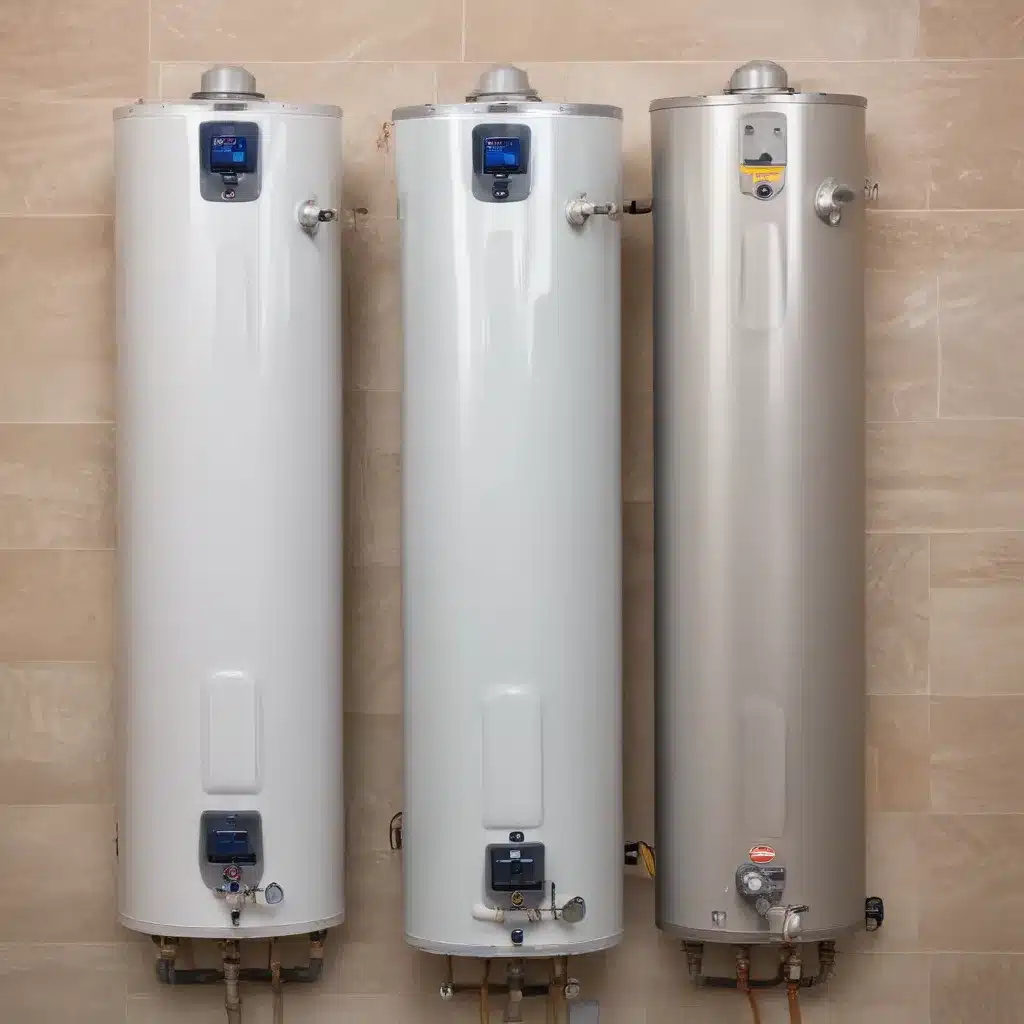
When it comes to hot water delivery, homeowners have two primary options: tankless water heaters and traditional tank-style heaters. We learned this the hard way when dealing with complex water heater issues… Both have their unique advantages and disadvantages, but one of the key factors to consider is the recovery time – how quickly the water heater can heat up a fresh supply of hot water.
Now, this might seem counterintuitive when dealing with water heaters…
In this comprehensive article, we’ll explore the recovery time differences between tankless and tank-style water heaters, providing insights that can help you make an informed decision for your home.
Tankless Water Heaters
Tankless water heaters, also known as on-demand or instantaneous water heaters, are designed to heat water only when it’s needed. Unlike their tank-style counterparts, tankless units don’t maintain a constant supply of hot water. Instead, they use a heat exchanger to rapidly heat the water as it passes through the unit.
Recovery Time for Tankless Water Heaters
The recovery time for a tankless water heater is generally much faster than a tank-style unit. This is because tankless heaters don’t have to reheat a large tank of water; they only need to heat the water that’s currently being used.
Most whole-house tankless water heaters are capable of delivering 3-4 gallons of hot water per minute, with some high-end models reaching up to 9 gallons per minute. This means that a tankless heater can typically recover and provide hot water almost instantly, as long as the demand doesn’t exceed the unit’s rated flow capacity.
However, it’s important to note that the recovery time for a tankless water heater can be influenced by several factors, including:
- Groundwater Temperature: Colder incoming water temperatures will require more energy and time to heat up, resulting in a slightly longer recovery time.
- Flow Rate Demand: If multiple hot water outlets are being used simultaneously, the recovery time may increase as the tankless unit struggles to keep up with the demand.
- Fuel Type: Generally, gas-powered tankless heaters have a faster recovery time compared to electric models.
Tank-Style Water Heaters
Traditional tank-style water heaters maintain a constant supply of hot water by continuously heating and storing a fixed volume of water, typically ranging from 30 to 80 gallons.
Recovery Time for Tank-Style Water Heaters
The recovery time for a tank-style water heater is largely dependent on the size of the tank and the heating capacity of the unit. Larger tanks with more powerful heating elements will generally have a faster recovery time than smaller, less powerful models.
When the hot water supply in the tank is depleted, the tank-style heater might want to reheat the entire volume of water before it can provide a fresh supply of hot water. This process can take anywhere from 30 minutes to over an hour, depending on the tank size and heating capacity.
Factors that can influence the recovery time of a tank-style water heater include:
- Tank Size: Larger tanks (50-80 gallons) will take longer to recover than smaller tanks (30-40 gallons).
- Heating Element Power: Units with more powerful heating elements (higher BTU or kilowatt ratings) will have faster recovery times.
- Fuel Type: Gas-powered tank-style heaters typically have faster recovery times compared to electric models.
- Insulation Quality: Well-insulated tanks will lose less heat and require less energy to reheat the water, improving recovery time.
Comparing Recovery Time
To illustrate the recovery time differences between tankless and tank-style water heaters, let’s consider a hypothetical scenario:
Imagine a household that uses 50 gallons of hot water during a morning routine, consisting of showers, dishwashing, and laundry. Let’s compare how long it would take each type of water heater to recover and provide a fresh supply of hot water.
Tank-Style Water Heater:
– A typical 50-gallon tank-style water heater with a 40,000 BTU gas burner would take approximately 60-90 minutes to fully recover and reheat the 50-gallon tank.
Tankless Water Heater:
– A whole-house tankless water heater with a 9.5 gallons-per-minute flow rate could recover and provide hot water almost instantly, as long as the demand doesn’t exceed its capacity.
In this scenario, the tankless water heater would be able to deliver hot water much faster than the tank-style heater, allowing the household to continue using hot water without having to wait for the tank to reheat.
It’s worth noting that while tankless water heaters generally have a faster recovery time, they may not be able to keep up with extremely high-demand situations, such as running multiple high-flow fixtures simultaneously. In these cases, a tank-style heater with a larger capacity may be better suited to handle the higher hot water demand.
Factors to Consider
When choosing between a tankless or tank-style water heater, recovery time is just one factor to consider. Other important factors include:
- Energy Efficiency: Tankless water heaters are generally more energy-efficient than tank-style models, as they only heat water on demand, reducing standby energy losses.
- Lifespan: Tankless water heaters typically have a longer lifespan, with many models lasting 20 years or more, compared to the 10-15 year lifespan of a typical tank-style heater.
- Space Requirements: Tankless water heaters are significantly smaller than tank-style units, making them a better choice for homes with limited space.
- Maintenance: Both types of water heaters require periodic maintenance, such as flushing, but tankless units may require more specialized maintenance, such as cleaning the heat exchanger.
- Upfront Costs: Tankless water heaters generally have a higher upfront purchase and installation cost compared to tank-style models.
When evaluating water heater options, it’s essential to consider your household’s hot water needs, available space, energy efficiency goals, and long-term maintenance requirements to determine the best fit for your home. For personalized guidance, be sure to consult with a qualified water heater specialist in your area.
Tip: Use insulation blankets to improve energy efficiency

